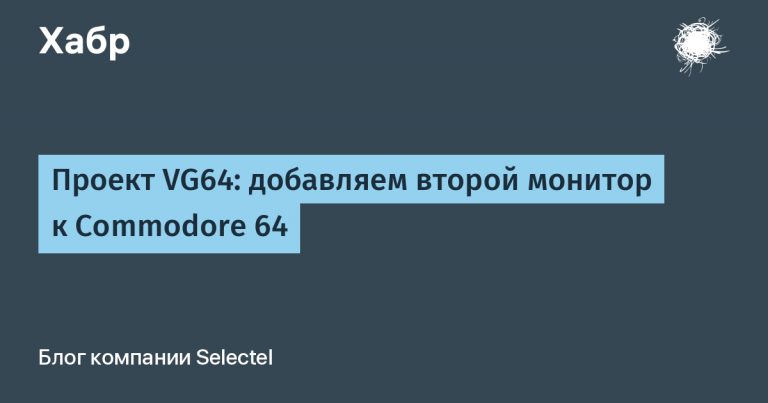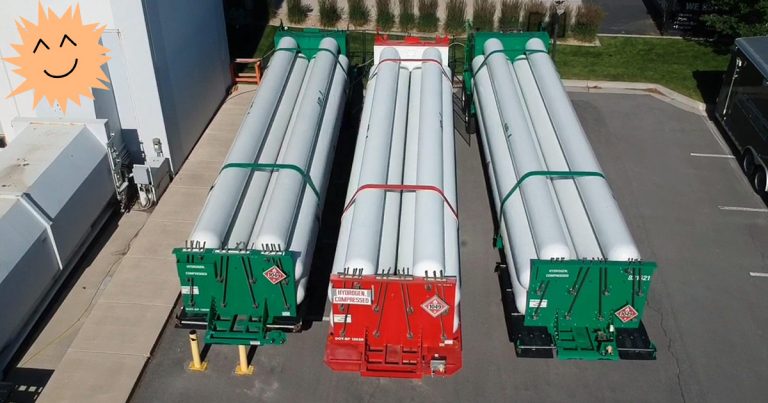Guide to creating games for kids

Unity is a powerful game engine that is used to create a wide range of games, from small indie projects to large AAA titles. Here are some examples of games created with Unity:
Among Us is a multiplayer game where players try to figure out the traitor among their own.
Subnautica is an open world first-person game where the player must survive in an underwater world.
Cuphead is a gaming classic with hand-drawn graphics and challenging gameplay.
Stardew Valley is a popular farming simulation game where the player can build relationships with other characters, farm, and fish.
Fall Guys: Ultimate Knockout is a fun and fast-paced multiplayer game with battle royale elements where players compete in funny competitions.
Surely you have heard about a couple of them, and maybe even played them. And all these games are created using the Unity game engine. But not only professional developers can work with the platform. Children quite successfully master the engine tools and create their first game projects as schoolchildren. In this material, school Pixel shares a Unity tutorial for kids ages 10 and up. We'll look at what Raycast is and how it can be useful in games.
Why does a child need Unity programming courses for kids?

First, let's talk a little about the benefits. Here are seven reasons why Unity is perfect for teaching kids and inspiring creativity:
1. Accessibility and simplicity of the Unity courses for children: Unity offers an intuitive interface that won’t confuse a novice developer. It has easy-to-use tools and a convenient help system, making the learning process smoother and more enjoyable. Children can start creating their first games at an early age without being overwhelmed by the complexities of programming.
2. Unity games for schoolchildren are motivation: For children, games are not just entertainment, but a whole world of fantasy and adventure. The platform allows you to realize your own ideas, create exciting games and share them with friends. Such creative activities develop imagination, logical thinking, the ability to solve problems and bring pleasure from the results achieved.
3. Teaching Unity to schoolchildren through practice. Unity offers an interactive approach to learning programming. Kids immediately apply what they learn to practice by creating their own games. This helps reinforce knowledge, develop practical skills, and gain a deeper understanding of the development process.
4. Unity for kids is a versatile toolkit. The engine is not limited to just game development. It can be used to develop virtual and augmented realities, create interactive simulations, and even develop mobile apps. This opens up a wide range of creative opportunities for children and the development of professional skills in various fields.
5. Creativity and innovation. The process of creating games for children encourages creativity and allows children to implement their own ideas. They can create unique projects with non-standard game mechanics, characters and plots. This develops fantasy, imagination and the ability to think outside the box.
6. Teamwork. Creating a game in real life is a team effort, with each participant responsible for their own part of the project. Unity allows children to learn how to work in a team, share ideas, solve problems together, and achieve common goals. This is a valuable skill that will be useful in their future professional life.
7. Preparing for the Future with Unity. Gaming technologies are developing dynamically, and knowledge in the field of game development will be in demand in the future. Studying the engine gives children valuable knowledge and skills that will help them build a successful career in the IT field or in other industries that use modern technologies.
Unity for Kids: Mastering Raycast
Raycasting is widely used in development for various tasks such as collision detection, determining what the camera is looking at, creating rays for weapons in first-person shooters, and much more.
Raycast in Unity is a method that is used to determine whether an object is in a ray cast from a specific point in space. This method allows you to check whether the ray intersects with any object in the scene and get information about that intersection, such as the intersection point, the surface normal, and even information about the object itself.
To perform a beam strike in Unity, you can use functions such as Physics.Raycast or Physics.RaycastAll (to find all intersections), specifying the starting point of the beam, the direction, and the maximum length of the beam. The result will be the intersection information or an array of such information, depending on the chosen function. This allows you to determine, for example, whether the player is in the enemy's hit zone or whether the bullets hit the target.
Unity: Physics.Raycast example:
using UnityEngine;
public class RaycastExample : MonoBehaviour
{
void Update()
{
// Создаем луч из позиции камеры в направлении впереди
Ray ray = Camera.main.ScreenPointToRay(Input.mousePosition);
RaycastHit hit;
// Проверяем, пересекается ли луч с чем-либо на сцене
if (Physics.Raycast(ray, out hit))
{
// Если пересечение есть, вы можете получить информацию о нем
Transform objectHit = hit.transform;
Debug.Log("Попал в объект: " + objectHit.name);
}
}
}This code fires a ray from the camera position in the direction specified by the mouse position, and prints the name of the object the ray intersects to the console.
The `Raycast` function in Unity is used to determine whether an object is in a ray cast from a specific point in space. This option is often used for collision detection, interaction with objects in the scene, and other gameplay purposes.

Here are some games and example scenarios where `Raycast` is used:
1. Shooter Games:
– Shooter games often use `Raycast` to detect bullet hits and weapon firing.
2. Physics puzzle games:
– For example, Portal games use beams to determine where portals can be placed.
3. AR and VR games:
– in augmented and virtual reality games, `Raycast` can be used to interact with objects in the virtual world.
4. Games with collision detection:
– for example, in platform games `Raycast` is used to detect when a character touches a surface or falls off a platform.
5. Games with visual effects:
– Sometimes `Raycast` is used to create visual effects such as light beams, lasers or magic spells.
6. Games with artificial intelligence systems:
– In some games, `Raycast` is used to determine the visibility of players or NPCs, which can affect the behavior of artificial intelligence.
7. Games with trajectory calculations:
– in games where you need to predict the movement of objects (such as balls or projectiles), `Raycast` can be used to calculate trajectories.
8. Games involving interaction with objects in the environment:
– `Raycast` can be used to interact with objects in the environment, such as doors, interactive elements and items.
These are just a few examples of how `Raycast` in Unity can be used when developing games for school-aged children. It is a powerful tool for working with physics and interactivity in the game world.
What errors can occur when using `Raycast`
When using `Raycast` to develop computer games for children, various errors or problems may occur, including the following:
1. No intersections. If the ray does not intersect any objects in the scene, the `Physics.Raycast` function will return `false` and the intersection information (`RaycastHit`) will be undefined. Therefore, it is necessary to check the result of `Raycast` before accessing the intersection data.
if (Physics.Raycast(ray, out RaycastHit hit))
{
// Действия, связанные с пересечением
}2. Incorrect settings for layers and masks. Unity uses layers and masks to control what objects `Raycast` will interact with. Make sure your layers are set up correctly and match your expectations.
3. Problems with beam direction. If the beam direction is set incorrectly, `Raycast` may return unpredictable results. Make sure the beam is set up correctly.
4. Insufficient beam length. If the beam is too short and does not reach the object, the `Raycast` result will be negative. Make sure the beam is long enough to cover the objects of interest.
5. Problems with collisions. If objects in the scene have incorrect collision components or settings, this may lead to incorrect `Raycast` results. Check the collisions of the objects.
6. Performance issues. Performing `Raycast` on a large number of rays or in frames with high performance load may cause performance issues. In such cases, the code should be optimized.
7. Using incorrect parameters when working with `Raycast`. `Raycast` parameters such as layers, masks, max distance and others must be set correctly, otherwise it may lead to undesirable results.
8. Crashes due to asynchrony. If you perform `Raycast` in asynchronous code or in code running on another thread, it may cause crashes. `Raycast` should be called from the main thread.
General troubleshooting for `Raycast` involves thorough testing, proper configuration of settings, and handling of possible errors. This will help avoid unpredictable behavior and problems with your game mechanics.
More details about `Raycast` are given in the free Unity training lesson for kids:
Five Free Game Development Lessons for Kids
If you are interested in the Unity platform and want to master other methods and engine tools, we recommend watching more video tutorials in the free Unity course for schoolchildren.
For Beginners in Programming Unity for Kids: Creating Animation
A seven-minute video where the teacher explains step by step how to create a character's movement. To do this, you will need to set up our hero, create the animation itself (the video talks about several ways to do this) and program it in C#.
For horror lovers: a lesson on creating a horror story in the Unity course for kids
An interesting activity, thanks to which the child will learn what horror plots are made of, what textures and light settings are used to create a “dark” atmosphere, how to write a script for the actions of the main character and bots.
For those who appreciate 2D games: building a platformer
A simple 10-minute tutorial on creating a 2D platformer. Step by step, you will be able to assemble the platform yourself, set up animation, set movement conditions with variables, write a script for switching and movement.
Teaching 2D and 3D Characters to Move: Unity Online Course for Kids
From the video you will learn how to create a 3D scene on the engine, how to assemble a map for 2D, try to create a script of movements for different characters.
For young developers of the Unity programming course for children: instructions for downloading games to the Play Market
The video explains how to prepare a game project for uploading, how to set up a personal account, and how to publish a game for everyone to access.
As a bonus, we suggest you watch selection best games on Unity with detailed descriptions and mechanics of how a particular project is created. If you have other examples of cool game projects on Unity, share them in the comments.
***
The material was prepared by the children's programming school Pixel. We teach children programming, game creation (including on the Unity engine), 3D modeling, web design and other areas. Join us if you want to introduce your child to IT.





